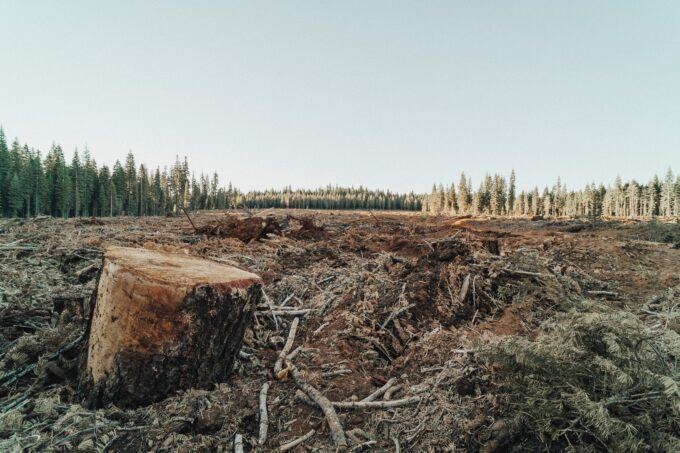
Image by roya ann miller.
Imagine the largest tree you ever saw. Maybe you remember looking up, trying to see all the way to its crown. Maybe you recall wanting to stretch your arms around the tree. How many people did it take to encircle it? Maybe you remember the ecosystem you and the tree were in. Regardless of where your memory of this tree takes you, it’s likely you can recall it vividly.
This, to me, is because big trees are impactful. They resonate. They are magical. There is history and wisdom in large trees that we humans will never fully be able to access. While you’re there admiring the giant for just a moment, the giant has taken in and modified the ecosystem where it stands for 100, 200, 300 years or more. The tree has been habitat for who knows how many species. It’s converted carbon dioxide to oxygen, held soil in place, filtered water, and maintained moisture regimes.
Contemporary research shows that large trees actually transfer nutrients via mycorrhizal networks to their own offspring and exchange nutrients with other species of trees to help themselves and others survive. And we know these large trees store massive amounts of carbon, 17.2 billion metric tons in federal forests alone.
On Earth Day 2022, the Biden administration ordered the federal government to inventory mature and old-growth forests on federal lands and identify threats to the large trees. Unfortunately, this executive order did not ban logging of mature and old-growth trees. Though the president’s order noted America’s forests absorb more than 10 percent of the nation’s total greenhouse gas emissions, the order doesn’t identify logging as a threat to these same trees. And while there’s lots of nice talk about old-growth forests and their value in reducing the impacts of climate change, project after project coming out of the U.S. Forest Service specifically targets these trees that are fundamental to our survival. Many of these projects are being proposed in the name of saving the forest from forest fires. As a biologist, I’ve never quite grasped the convoluted rationale that by cutting down large trees we will somehow save them or the ecosystem benefits they provide.
As a supporter of WildEarth Guardians, you know that Guardians is steadfast in its work to conserve and protect old-growth and mature trees and forests across the West, from ponderosa pines to sequoias to grand firs. This is why we’re currently challenging the U.S. Forest Service in eastern Oregon and southeastern Washington, where at the 11th hour Trump axed restrictions on cutting old, large trees across six national forests via the removal of the Eastside Screens. And in northwest Montana where the Forest Service is targeting some of Montana’s oldest—and wettest forests—on the Kootenai National Forest with a massive logging and roadbuilding project in crucial habitat for an isolated, fragile population of about 25 grizzly bears in the Yaak Valley. This is why we’re tracking proposals across the West, Gila to Glacier, and through the Sierras and Cascades, that might allow logging old, large trees. And this is why we’ve joined the Climate Forests Campaign, which brings together dozens of groups to push the Biden administration and the federal agencies that manage public lands to enact strong, lasting rules that protect old-growth and mature trees from logging.
To expose the terrible projects being planned that threaten big, old, important trees, the Climate Forests Campaign has identified a Top 10 list of bad logging projects being pushed from coast to coast.
We can’t keep saying old-growth forests and large trees are important—but then allow millions of acres of forests, including tens of thousands of acres old-growth, to be turned into board feet. Speak for the trees, and let the Biden administration know they need to stop talking out of both sides of their mouths and must protect old-growth forests and large trees on public lands.